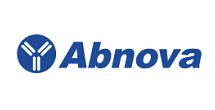NFATC1 monoclonal antibody, clone AT1C3



* The price is valid only in USA. Please select country.
-
More Files
- More Functions
-
Specification
Product Description
Mouse monoclonal antibody raised against partial recombinant NFATC1.
Immunogen
Recombinant protein corresponding to amino acids 428-716 of human NFATC1.
Host
Mouse
Reactivity
Human
Form
Liquid
Purification
Protein G purification
Isotype
IgG2a, kappa
Recommend Usage
ELISA
Flow Cytometry
Immunocytochemistry
Immunofluorescence
Western Blot
The optimal working dilution should be determined by the end user.Storage Buffer
In PBS, pH 7.4 (10% glycerol, 0.02% sodium azide).
Storage Instruction
Store at 2°C to 8°C for 1 week. For long term storage, aliquot and store at -20°C to -80°C.
Aliquot to avoid repeated freezing and thawing.Note
This product contains sodium azide: a POISONOUS AND HAZARDOUS SUBSTANCE which should be handled by trained staff only.
-
Applications
Western Blot
Western blot analysis of Lane 1: 293T cell lysate, Lane 2: NFATC1 Transfected 293T cell lysate.Immunocytochemistry
Immunofluorescence
Immunofluorescence analysis of HeLa cells. The cell was stained with NFATC1 monoclonal antibody, clone AT1C3 (1:100). The secondary antibody (green) was used Alexa Fluor 488. DAPI was stained the cell nucleus (blue).Enzyme-linked Immunoabsorbent Assay
Flow Cytometry
Flow cytometric analysis of Jurkat cells. The cell was stained with NFATC1 monoclonal antibody, clone AT1C3 at 2-5 ug for 1x16cells. (red). A Goat anti mouse IgG (Alexa fluor 488) was used as the secondary antibody. Mouse monoclonal IgG was used as the isotype control (dark gray), cells without incubation with primary and secondary antibody was used as the negative control (light gray). -
Gene Info — NFATC1
Entrez GeneID
4772Protein Accession#
NP_765978Gene Name
NFATC1
Gene Alias
MGC138448, NF-ATC, NFAT2, NFATc
Gene Description
nuclear factor of activated T-cells, cytoplasmic, calcineurin-dependent 1
Omim ID
600489Gene Ontology
HyperlinkGene Summary
The product of this gene is a component of the nuclear factor of activated T cells DNA-binding transcription complex. This complex consists of at least two components: a preexisting cytosolic component that translocates to the nucleus upon T cell receptor (TCR) stimulation, and an inducible nuclear component. Proteins belonging to this family of transcription factors play a central role in inducible gene transcription during immune response. The product of this gene is an inducible nuclear component. It functions as a major molecular target for the immunosuppressive drugs such as cyclosporin A. Five transcript variants encoding distinct isoforms have been identified for this gene. Different isoforms of this protein may regulate inducible expression of different cytokine genes. [provided by RefSeq
Other Designations
NFAT transcription complex cytosolic component|nuclear factor of activated T-cells, cytosolic component 1
-
Interactome
-
Pathway
-
Disease
-
Publication Reference
-
Epigenetic changes and suppression of the nuclear factor of activated T cell 1 (NFATC1) promoter in human lymphomas with defects in immunoreceptor signaling.
Akimzhanov A, Krenacs L, Schlegel T, Klein-Hessling S, Bagdi E, Stelkovics E, Kondo E, Chuvpilo S, Wilke P, Avots A, Gattenlohner S, Muller-Hermelink HK, Palmetshofer A, Serfling E.
The American Journal of Pathology 2008 Jan; 172(1):215.
Application:IHC-P, WB, Human, Human anaplastic large cell lymphomas, classical Hodgkin's lymphomas, peripheral blood lymphocytes, Jurkat, KM-H2, L428, L540 HL cells.
-
Autoamplification of NFATc1 expression determines its essential role in bone homeostasis.
Asagiri M, Sato K, Usami T, Ochi S, Nishina H, Yoshida H, Morita I, Wagner EF, Mak TW, Serfling E, Takayanagi H.
The Journal of Experimental Medicine 2005 Nov; 202(9):1261.
Application:ChIP, WB-Ce, Human, Mouse, BMMs, Daudi lymphoma cells.
-
Transcription factors of the NFAT family: regulation and function.
Rao A, Luo C, Hogan PG.
Annual Review of Immunology 1997 Apr; 15:707.
-
Epigenetic changes and suppression of the nuclear factor of activated T cell 1 (NFATC1) promoter in human lymphomas with defects in immunoreceptor signaling.
- +1-909-264-1399
+1-909-992-0619
Toll Free : +1-877-853-6098 - +1-909-992-3401
- sales@abnova.com














